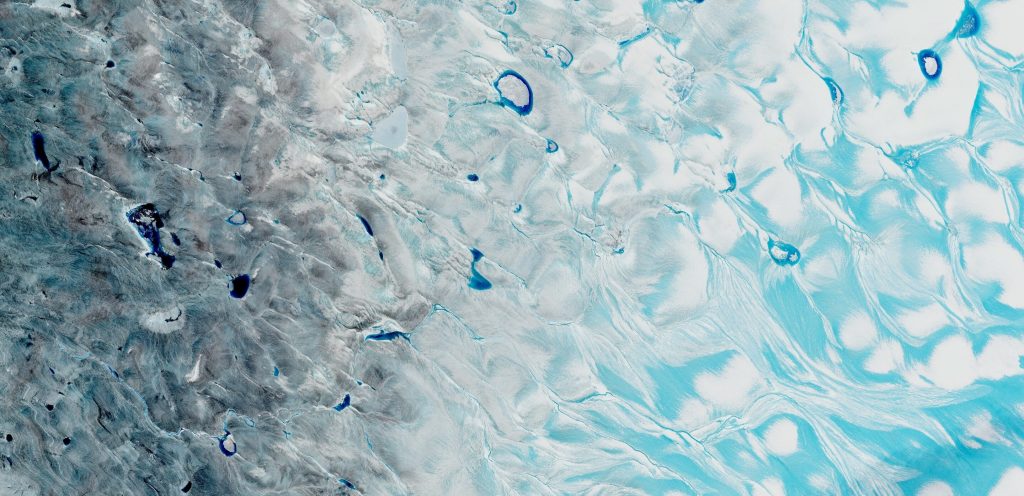I’ve covered the melting of the polar ice caps before (Emergency on Planet Earth: 28 trillion tonnes of ice melted since 1994) and this instance is no different. Marco Tedesco, a climate scientist at Columbia University’s Lamont-Doherty Earth Observatory, has been studying the Greenland Ice Sheet and its dwindling glacial environment:
“The water below starts to move but you still have snow on top,” Tedesco says of the phenomenon. As the flowing water gains momentum, overlying snow and ice give way and reveal a meltwater stream or river.
What Tedesco describes is a small-scale seasonal melt event, one of many that occur every summer at the lower-elevation edges of the Greenland Ice Sheet, an expanse of more than 650,000 square miles that’s second only to the Antarctic Ice Sheet in size. This year, however, things were different.
Observe the image below:

The bits on the right are pale blue water amongst clear white ice. The left side, however, shows meltwater lakes that continue to grow as the ice melts—an ongoing result of climate change.
The left side of the satellite image, Tedesco says, sits close to Greenland’s western coast, and is colored by rock, dust, and other particles deposited by wind, as well as bacteria and other microorganisms. Its darker color accelerates melting because of a phenomenon known as ice-albedo feedback.
“Albedo is a fancy word for how reflective the surface is,” says Serreze. As highly reflective snow and ice melt, the darker surface exposed—rock, open water, or older ice, depending on the location—absorbs more of the sun’s energy and spurs even more intense melting. “We’re seeing this across the Arctic as we’re losing the sea ice cover and we’re losing the snow cover,” he says.
To close, here’s an artsy bit of writing I did, paraphrasing passages from Roland Barthes’ The Death of the Author:
Though the sway of the Arctic and other dying biomes remain powerful it goes without saying that certain capitalists have long since attempted to loosen them. The removal of the polar regions, the rainforests, and the reefs are not merely historical facts or acts of climate change; they utterly transform the modern world. The temporality is different. These tundras are thought to nourish their inhabitants, which is to say that they exist before it, think, suffer, live for it, in the same relation of antecedence to their work as a father to his child. In complete contrast, a human is born simultaneously with their environment, is in no way equipped with a being, preceding or exceeding, the biome, is not the subject with the environment as predicate; there is no other time than that of their experiences and every life is eternally lived here and now.
(via Atlas Obscura)
Filed under: climate change Earth glaciology ice The Arctic